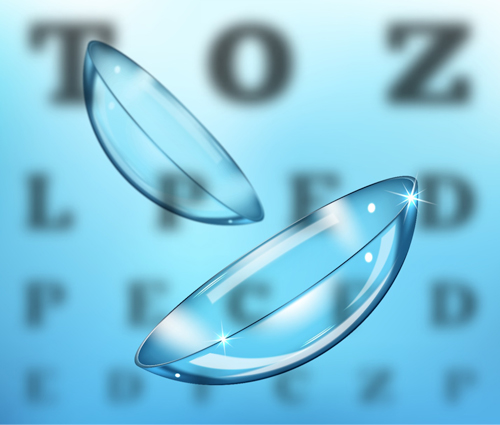Contact Lens Theory can be a challenging subject to teach and to absorb because most students are more familiar with spectacle lenses as they are initially introduced to refractive errors, how light bends through different mediums, and how spectacle lenses correct vision. It may be easier to understand the concept of visual correction when one can actually hold the lens in hand, see the shape of the lens either thick in the center or at the edges, and diagram the light rays entering and converging or diverging through the material.
To be best prepared for contact lens study, students at Goodwin College take an Anatomy, Physiology, and Pathology of the Eye for the Optician (A&P) course prior to taking contact lens courses. This plan is especially helpful because the students will be familiar with the lids, lashes, cornea, tear film, refractive errors, the crystalline lens and accommodation, and ocular diseases and disorders. Having this background prepares them for what is to come. After A&P, students take Contact lens Theory I (history, soft, GP, toric, multifocal lenses, indications and contraindications, and instrumentation), Contact Lens Theory II (advanced fitting techniques), and then everyone’s favorite: Contact Lens Theory and Application. This is the hands-on course where students apply what they have been learning by fitting, dispensing and evaluating both soft and GP lenses on each other. I usually jump right in with gas permeable lenses first, explaining that they are similar to spectacle lenses, but smaller. We diagram the lens, identifying the “parts” of a gas permeable lens. By parts, I mean the diameter, optic zone, peripheral curves, intermediate curves, base curve, center thickness, anterior curve, posterior curve, and edge. What I found to be helpful is to pass out paper plates (the kind with the rippled border) to the students then have them identify the “parts” on the plate, then they can use it as a study tool.
 |
Making contact lens study meaningful is a goal for me as an instructor. Towards the end of the semester, I share case studies that the students read and review. They are pleased when they can get through it and actually know the content. Contact lenses correct myriad visual, physical, and physiological conditions, and increase the quality of life for so many. It is satisfying when graduates go on to become contact lens practitioners and we hear how fulfilled they are with their chosen area of opticianry.
You can learn about the uses of contact lenses beyond vision correction with our CE, Therapeutic Contact Lenses and Beyond, at 2020mag.com/ce.













